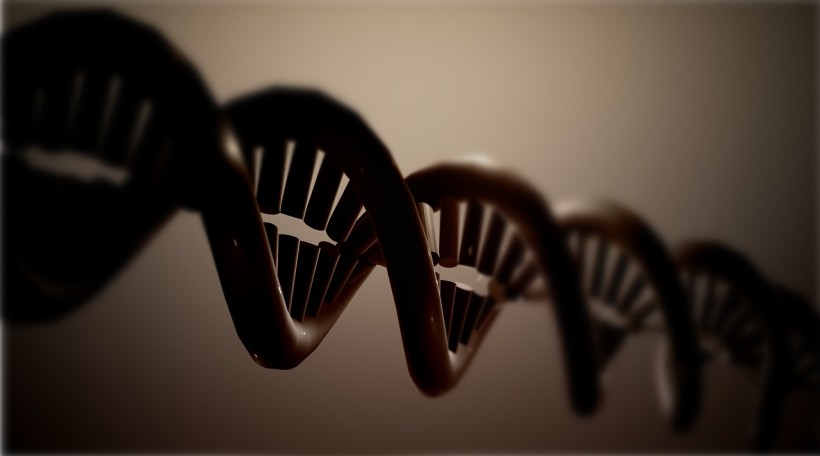While both James Watson and Francis Crick are acknowledged for the discovery of the double helix, they are thought to have documented it after stealing the findings of Rosalind Franklin, a physical chemist who worked at King's College London. Now, unpublished materials shed light on the vital role Rosalind Franklin played in the discovery of DNA structure and that she may have been an actual contributor and not a victim.
Rosalind Franklin's Contribution to DNA Structure Discovery
According to a Nature paper, Franklin had several key contributions to the discovery and understanding of the double helix. For one, she was able to differentiate both A and B forms, with the A form being crystalline and the B form being paracrystalline. Moreover, the physical chemist was also able to independently grasp how DNA had the capacity to specify proteins.
She was also the one who took the famous Photograph 51 that played a vital role to the discovery of DNA's unique form. Overall, Franklin was actually the first one to point out the double-helix structure of DNA that mirrored that of a spiral staircase.
Photo 51 taken by Rosalind Franklin & Phd student R.G Gosling. pic.twitter.com/uhnqWTSnXx
— Lunar Heritage (@Lunarheritage) July 25, 2019
ALSO READ: DNA Double Helix Splits Due to Invasive Nature of Unzipping Process
Rosalin Franklin: an Equal Contributor
As per Live Science, Franklin's role was documented in an unpublished news article and overlooked letter from 1953. She made a huge contribution to DNA structure discovery as the scientists who won the Nobel Prize for the findings. However, Franklin passed away before the awarding, which made her forfeit the award.
Nevertheless, she may have willingly shared her findings with both Crick and Watson, as opposed to assumptions that her images were used without consent.
This was something that researchers wanted to delve into: they wanted to set things straight. Hence, Nathaniel Comfort, a professor of the history of medicine from John Hopkins University in Baltimore, worked with Matthew Cobb, a professor of zoology from the University of Manchester, to delve into this mystery. Their analyses were reported in the Nature paper.
Comfort looked into archives and discovered a 1953 unpublished article that journalist Joan Bruce wrote for Time Magazine. Bruce reportedly wrote the draft after consulting Franklin.
Bruce detailed in the writeup that a group of scientists split up into teams. One team involved Franklin and Maurice Wilkins, who both looked into DNA X-ray analysis. Crick and Watson made up the other team that used a model-based approach to look into DNA structure. They published a 1953 paper based on models and X-rays.
Though the two teams proceeded independently, they also connected with each other and verified each other's findings from time to time. Considering such dynamics, Franklin may have freely relayed her findings to Crick and Watson.
Moreover, Pauline Cowan, one of the physical chemist's colleagues, also wrote a letter. In the letter, Cowan detailed an invitation to Crick regarding a speech Franklin gave about the different forms of DNA.
Cobb notes how surprising this was, as it demonstrated that there were no dramatic races that can be found in competitive labs these days.
Both Comfort and Cobb concluded their paper by stating that Franklin knew about Watson and Crick's knowledge of her findings. This made Franklin an equal contributor to the discovery.
Cobb notes that Franklin may have known that it was a double-helix. In fact, Live Science reports that, based on some of her 1951 seminar notes, she described both DNA forms as a huge helix that had many chains.
Comfort explains that the study better depicts Franklin. She used to be referred to as a victim scientist, but this paper shows how she was an equal contributor. It is important to note, however, that both Crick and Watson had a faux-pas by not citing her in their paper.
Live Science notes, however, that in a follow-up 1954 study they noted that it would have been impossible to know about DNA structure without Franklin's data.
RELATED ARTICLE: DNA Through Air: Scientists Propose New Way of Tracking Endangered Animals in the Wild
Check out more news and information on Genetics in Science Times.












!['Cosmic Glitch' in Einstein's Theory of General Relativity Could Be Explained in This New Scientific Tweak [Study]](https://1721181113.rsc.cdn77.org/data/thumbs/full/53435/258/146/50/40/cosmic-glitch-in-einsteins-theory-of-general-relativity-could-be-explained-in-this-new-scientific-tweak-study.jpeg)


